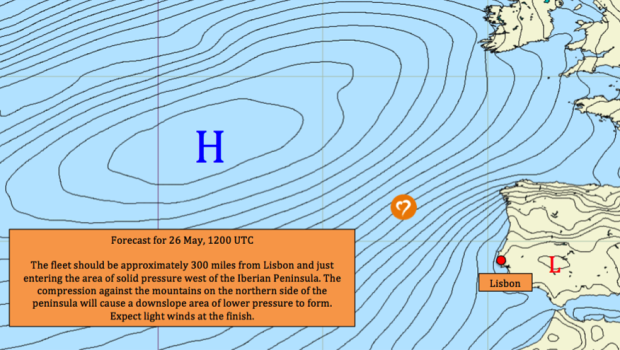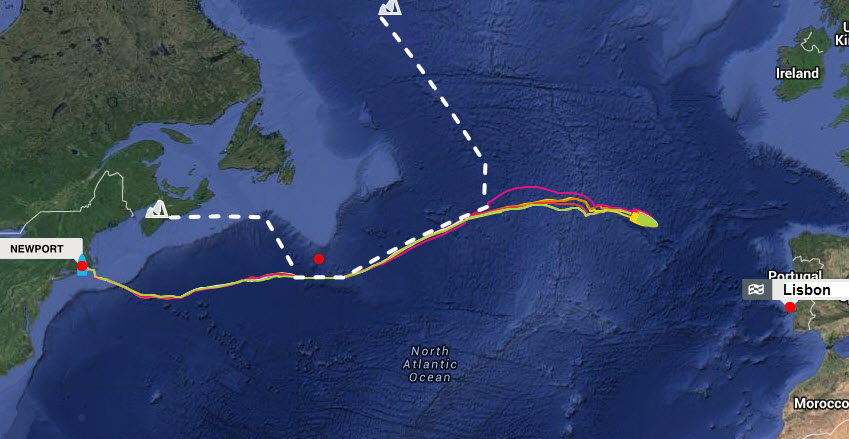Volvo Ocean Race: Final sprint to Lisbon is on
Published on May 25th, 2015
by Anderson Reggio, Team Alvimedica Navigation Support
(May 25, 2015) – With the entire Volvo Ocean Race fleet still within twenty-five miles of one another, . After finally getting around the fickle and unpredictable northern ridge coming off the Azorean High, the fleet is slowly getting into the building pressure on its eastern side.
The next 24 hours will very likely see a bit of rich getting richer as the lead boats get out into the building pressure first. However, with the fleet so tightly packed, it is likely that no one will be able to extend so far as to fully close the door on the current last place boat. While the finish line is just under 700 miles away, there still remains opportunity for a 20 mile lead to disappear quite quickly as the battle with this high is not yet complete.
The east coast of Portugal is topographically quite complex. Just a mere 50nm from the coast, the mountains of the Iberian Peninsula rise to over 1000m high and have a dramatic effect on the winds along the coast. This effect is enhanced in situations where the center of the Azorean High is dramatically far north. This is precisely the situation in which we find ourselves a mere 36 hours from the finish as the high is currently centered at around 45N. This is the reason why our fleet remains so far north of the direct path from Newport to Lisbon.
The high has been relatively stable for the past few days and has been pressing hard against the Iberian Peninsula. This has produced some dramatic ridging into the Bay of Biscay and, more importantly for our fleet, compression against the coast. An area of 25 knots will be crossed tomorrow morning before the final effect of this high takes hold.
The mountains of the peninsula have a tendency to act as a blockade against the high when it is situated so far north. This pattern causes an area of relative low pressure (albeit still around 1016mb) to form on the downslope side of the mountains, on the eastern side of Portugal. The high being blocked and the weak low forming will produce an area of light winds along the coast adjacent to Lisbon that the fleet will have to negotiate upon arrival early morning on the 27th.
These light northerly winds have potential to be quite variable in direction and pressure as the local effects of the River Tagus and the mountains just north of Cascais will likely make this a very interesting finish. Look for the weather models to be thrown out the window for the final 50 miles as the fleet negotiates one final TSS zone, the randomness of the breeze, and the strong outgoing current from the River Tagus. Despite the few miles left, a twenty-mile lead now may simply not be enough.
Race website – Tracking – Scoreboard – Videos
Background: The 2014-15 Volvo Ocean Race began in Alicante, Spain on Oct. 11 with the final finish on June 27 in Gothenburg, Sweden. Racing the new one design Volvo Ocean 65, seven teams will be scoring points in 9 offshore legs to determine the overall Volvo Ocean Race winner. Additionally, the teams will compete in 10 In-Port races at each stopover for a separate competition, the Volvo Ocean Race In-Port Series. The seventh leg, from Newport, USA to Lisbon, Portugal (2,800 nm), began May 17 with an ETA on May 27.










 We’ll keep your information safe.
We’ll keep your information safe.